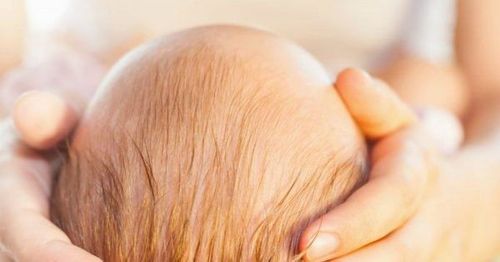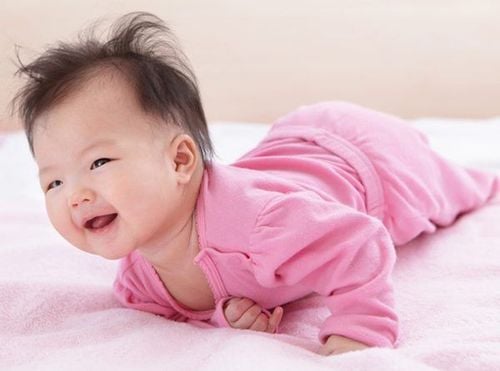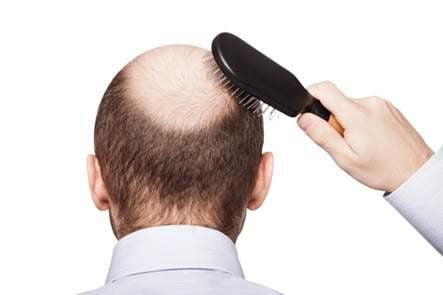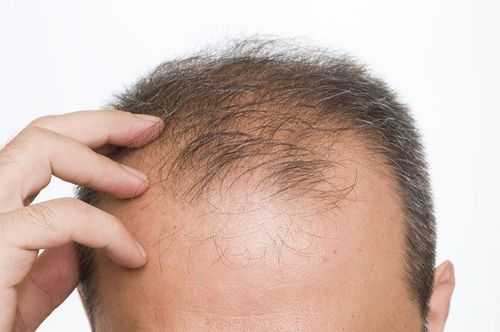This is an automatically translated article.
Hair loss in babies is a common phenomenon. In most cases, hair loss in babies is not a cause for concern. After a while, the hair will grow back normally. Instead, parents can find ways to overcome this situation, if it does not work for a long time, they can take their children to the doctor to diagnose the causes of the disease.
1. Is hair loss in babies normal?
Newborn hair loss is a completely normal phenomenon, parents do not need to worry. Newborns often experience hair loss during the first 6 months of life. This type of hair loss is called TE (telogen effuvium) alopecia, which is caused by the rapid transition of the hair into the resting (telogen) phase, but after a while the hair will grow back.
To better understand the phenomenon of hair loss in babies, parents need to understand the hair growth cycle. Hair growth on the scalp does not occur in a continuous cycle of activity but consists of a growing phase and a resting phase. The developmental stage, called anagen, lasts about 2-6 years. During this period, the hair growth activity takes place strongly, the hair is long and fast. The next stage is the intermediate phase (called catagen) which lasts for 1-2 weeks. During this stage hair growth stops. Next is the resting phase (stopping phase) called telogen, which lasts about 3 months, but in many cases lasts up to 6 months. Normally, hair in the anagen phase accounts for 80-90%, the hair in the catagen stage is 10-15% and the hair in the telogen phase accounts for 10-15%. However, if the body experiences stress, high fever, hormonal changes, ... can cause a large number of hairs to stop growing, rapidly switching from anagen phase to catagen and telogen phase. Newborns' hormone levels fluctuate a lot soon after birth, which can lead to hair loss at birth (women often lose their hair after giving birth for the same reason).
Newborn hair loss will occur about three months before the start of the next phase of hair growth. After the hair grows back, sometimes parents will be surprised because the baby has a completely different color and texture than the hair when the baby was born. Hair may be lighter, thicker, and stronger than it was before it fell out.
In some children the hair falls out and causes bald patches on the head. This could be because babies always sleep in the same position or tend to sit with their heads on the same side of the child seat. The constant contact causes friction, causing hair loss in that area.

Rụng tóc ở trẻ sơ sinh sẽ xảy ra trước khi bắt đầu giai đoạn tóc tăng trưởng
Some other possible causes of hair loss in children include:
Fungal infection of the scalp: hair loss in children with patchy red patches, flakes on the head, sometimes spots appear black where the hair is falling out, ... This could be a sign that the child has a fungal scalp disease such as ringworm. Babies love to pull their hair: Children with trichotillomania like to pull their own hair, this can be the cause of their thinning hair. The hair is subjected to excessive force due to traction such as when tying a ponytail. The immune system attacks the hair follicles, slowing hair growth. This disease is characterized by hair loss in patches, the hair loss area does not leave scars. Children with diseases related to thyroid dysfunction, hypopituitarism, ... can cause excessive hair loss. However, these causes are very rare in infants under 12 months of age.
2. What can be done to improve hair loss in babies?
If newborn hair loss is related to changing hormone levels in the body, parents do not need to worry but wait until the baby grows new hair.
If hair loss in children is caused by the baby sleeping too long in the same position, try changing the position in the crib, bed, changing the head position while the baby sleeps. Turn your baby's head alternately from side to side during each sleep. You can turn your baby's face to the right in one sleep and then turn the baby's face to the left for the next sleep.
Increase baby's tummy time each day, while the baby is awake. Tummy time is essential for the holistic development of a baby's body. Tummy time helps develop baby's neck muscles, so he can quickly turn his head to adjust position, not just lying in one position when sleeping.

Cha mẹ có thể tăng cường thời gian nằm sấp của trẻ mỗi ngày, vào lúc trẻ thức
If after 6 months of age, the baby's hair loss does not improve, parents should take the child to see a doctor. The doctor will check to detect potential diseases to treat if any. For example, if the cause of hair loss in children is ringworm, the doctor will prescribe antifungal medications to treat the child.
Parents, please take care of your hair and scalp gently until your hair grows back. Use a mild shampoo to avoid drying out your baby's hair and scalp. After washing the baby's hair, the mother uses a soft towel to dry the hair. Choose a soft-bristled brush for brushing, but avoid brushing your child's hair multiple times a day.
In addition, in order to prevent diseases that babies often get, parents should pay attention to nutrition to improve children's resistance. At the same time, add supporting foods containing lysine, essential micro-minerals and vitamins such as zinc, chromium, selenium, B vitamins,... snacks and less digestive problems.
Parents can learn more:
Why do you need to supplement Lysine for your baby?
The role of zinc - Guidelines for reasonable zinc supplementation
Please visit the website Vinmec.com regularly and update useful information to take care of your baby and family.
Reference source: babycenter.com













